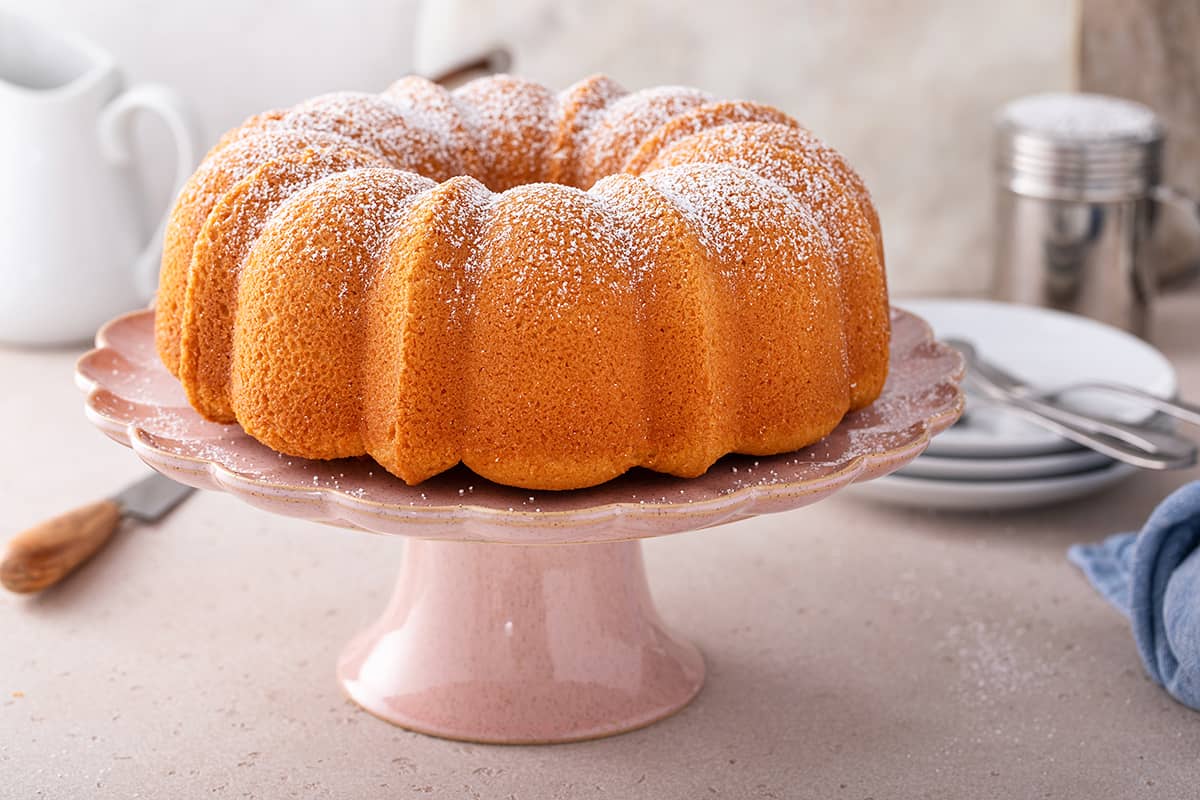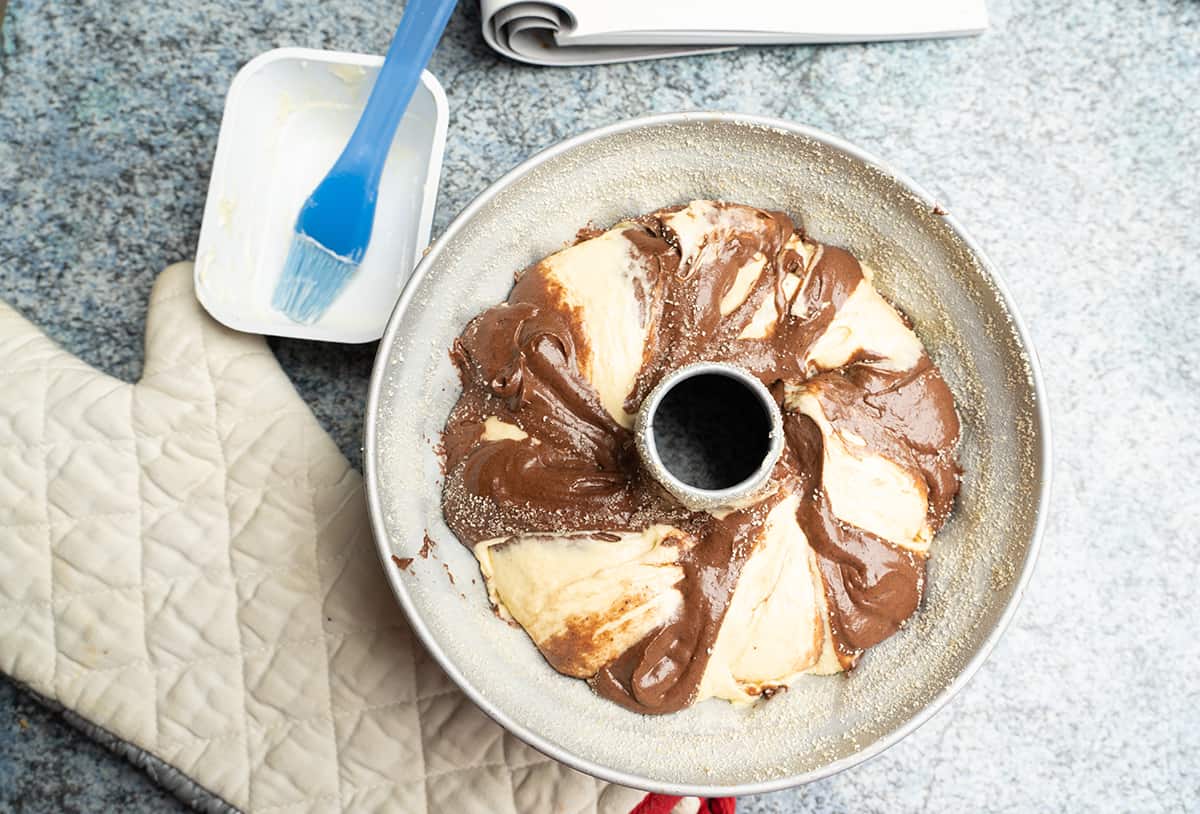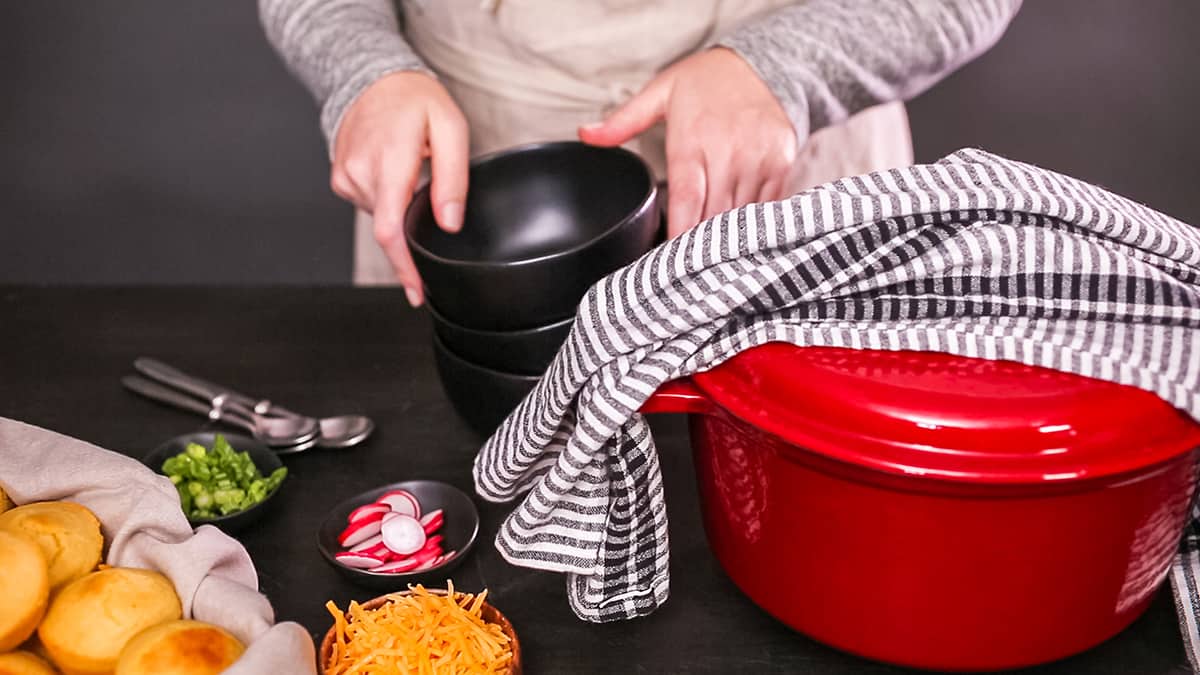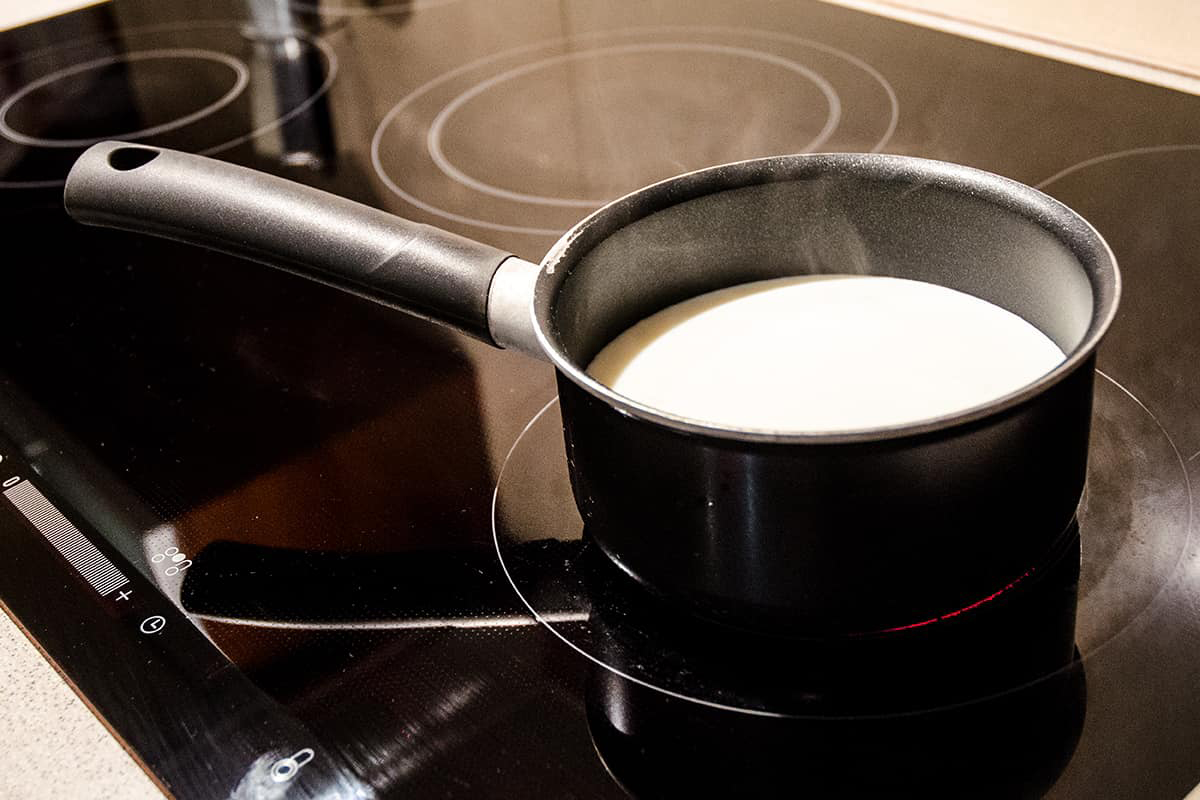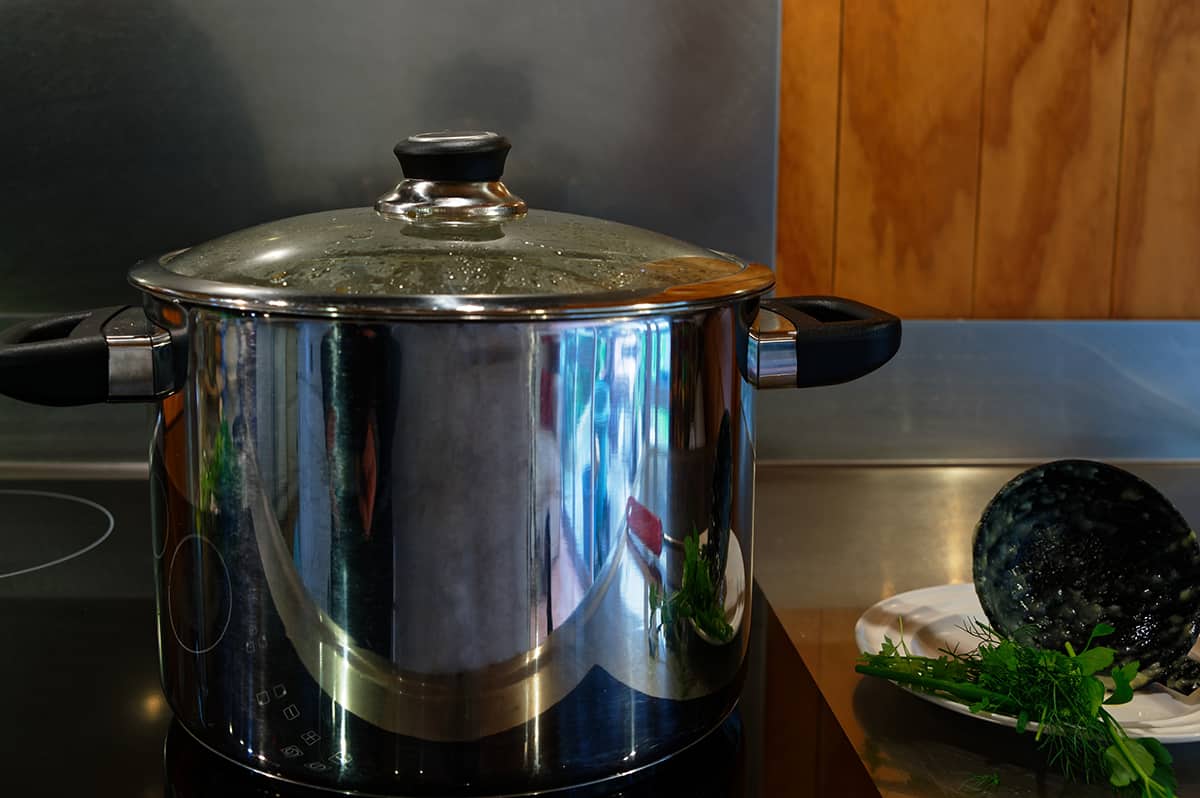Bundt pans are a type of cake mold that will result in a decorative and interesting cake, even without the use of icing or additional decoration.
These types of pans are easy to use, though it’s imperative that you take measures to ensure the cake does not stick to the pan. This can include choosing the most appropriate pan, greasing the pan, and adding an extra coating to the grease, such as flour.
Why Does Cake Stick to Bundt Pans?
Bundt pans are unique in that they do not have smooth, flat edges like most other types of the cake pan. The textured design of a bundt pan is what gives bundt cakes their characteristic, unusual shapes, however, it is this design feature that means the cake is more vulnerable to sticking to the pan.
You can compare this to making sandcastles. If you use a simple, round bucket to make a sandcastle, you are more likely to have a successful sandcastle that remains all in one piece when you lift off the bucket. If you make a sandcastle with an intricately detailed bucket, then the chances are higher that you will lose a turret when the bucket is pulled away from the sand. This is because a decorative pan effectively segments the cake (or sandcastle) into sections.
The smaller the sections are, the more vulnerable they are to be pulled away from the main part of the cake. For this reason, using a non-stick pan and appropriate grease is very important when making a bundt cake, even more so than when making the cake in regular cake pans.
How to Prevent Cake from Sticking to Bundt Pans
Choose the best pan
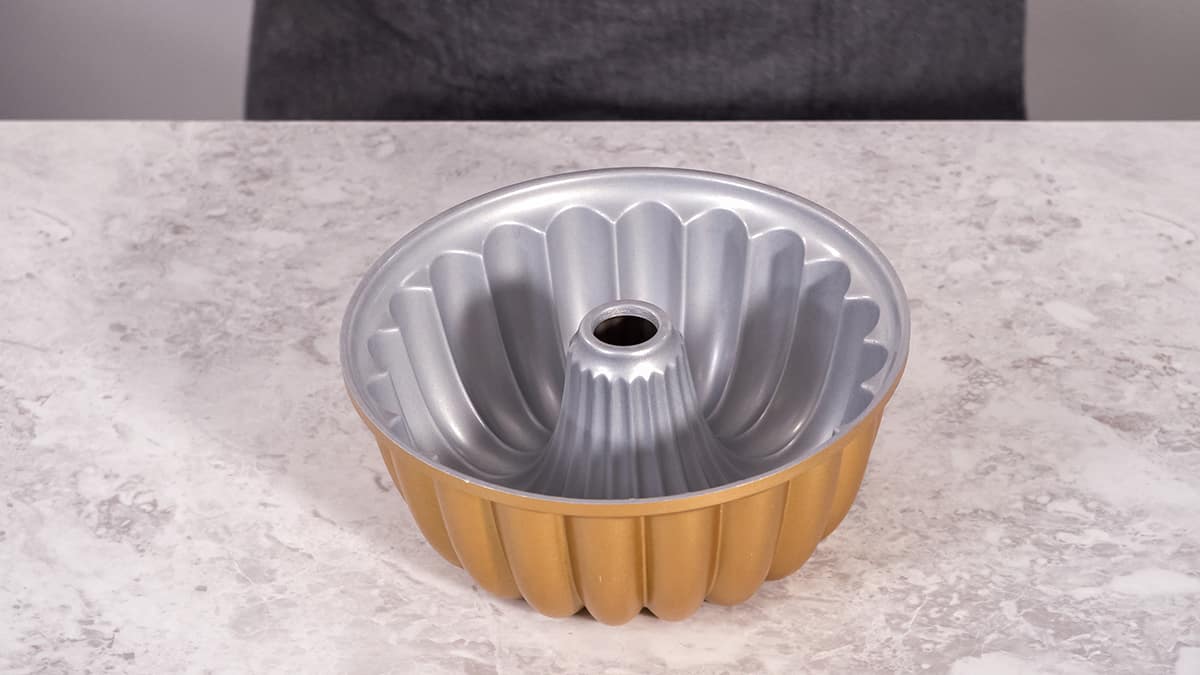
Bundt pans that are old and damaged will almost always result in a bundt cake that is missing pieces. If your pan is scratched or has black areas of long burnt-on old cake, then it’s time to throw this pan out and replace it with a new one.
Using a new and clean bundt pan that has a good non-stick coating will make all the difference between a successful or failed bundt cake. Don’t try to risk making your bundt cake with a scratched pan, because no amount of grease will be able to prevent the cake from sticking to this.
Use a suitable grease
Butter is commonly used to grease cake pans, but this actually isn’t the best product to use because it contains milk which can make the cake batter stick to the pan. Instead, an edible oil such as canola oil or olive oil is the best type of grease to use, because it has the best non-stick properties.
Alternatively, melted shortening is another good option. There are a number of non-stick sprays on the market which are targeted at the baking community, however, these are not the best option to use with bundt pans. These sprays contain additives which can actually cause build-up on the non-stick coating of your pans, which means that they won’t last as long as they are supposed to.
Choose a suitable greasing method
The method you use to grease your bundt pan will in part be determined by the type of grease you choose. If you are using oil then a spray bottle is considered to be the superior method of greasing the pan. A spray bottle will allow you to spritz the oil onto the pan, moving to different angles so that all of the nooks and crannies are sprayed with drops of oil.
You can build up the grease gradually, avoiding the likelihood of using too much oil. Spraying the oil onto the pan will give you an even finish that reaches all areas of the inner surface of the pan, and it will also present you with the quickest option. A spray bottle will also minimize your washing up since you won’t need to use a dish or a pastry brush.
If you don’t have a spray bottle of oil, or if you’d prefer to use melted shortening, then a pastry brush is a good choice. The smaller the head is on the brush, the better, as this will help to ensure the grease gets into even the smallest ridges of the pan.
Grease at the right time
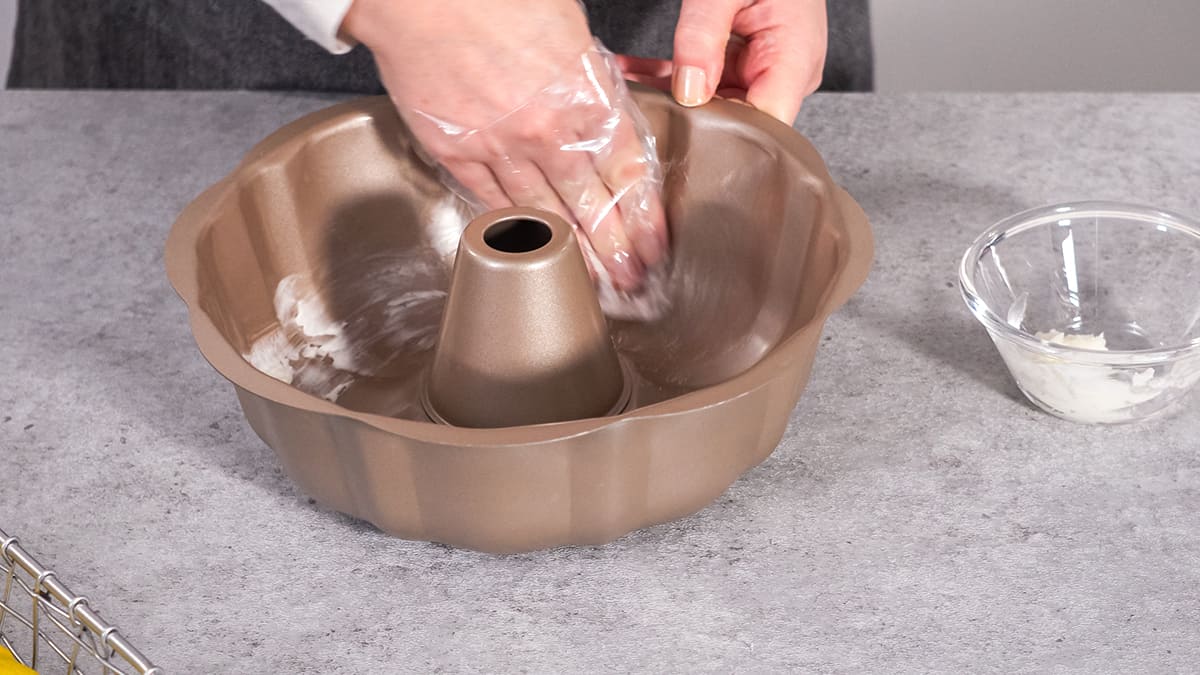
Most baking recipes ask you to grease the pan right at the beginning of the process, at the same time the oven should be turned on for pre-heating. This does not work well when making bundt cakes, because it allows time for the grease to drip down the walls of the pan and pool in the base.
This uneven layer of grease will mean that the walls of the cake will be more prone to sticking, and the top of the cake will not bake properly or will be overly greasy. There is an easy way to ensure that the layer of grease in the pan stays uniform, and this is to hold off on greasing until the last minute.
Make your cake batter, and when you are ready to pour the batter into the bundt pan and put it in the oven, you can grease the pan at this point. The cake batter should be poured into the pan immediately after it has been greased, as this will create the best circumstances for the grease to do its job.
Coat the greased pan with flour
Some bakers advocate flouring a bundt pan after it has been greased, to create an additional layer between the cake batter and the pan walls, and to give the cake batter a different surface to stick to. Some bakers disagree with this tactic, since flour can actually encourage sticking, and it can also cause a mottled or uneven effect on the finished cake.
A good alternative to regular flour if you do want to add an extra coating to the pan, is almond flour, sugar, or cocoa powder. Choose one of these ingredients and sift them gently over the greased pan using a sieve. Pat the edges of the pan to evenly disperse the flour, and then tip it upside down to remove any excess.
Cocoa powder represents the best option for dark bundt cakes or chocolate bundt cakes, while almond flour is best for vanilla or light-colored bundt cakes. Sugar will work well for any color or flavor of bundt cake, and it can add extra sweetness and a lightly crisp texture to the exterior of the cake.
Bake immediately
As soon as your bundt pan has been appropriately greased and floured, you should pour in your cake mixture and bake it right away.
Don’t Remove Bundt Cake From Pan Early
Once the bundt cake is cooked, move it onto a wire rack on the kitchen counter. Allow the cake to cool before you attempt to remove the cake from the pan because as it cools it will decrease slightly in size, making it easier to separate the two from each other.
Once the cake has cooled to room temperature, which will typically take two to three hours, turn the bundt cake over and slide the pan away from the cake by lifting it upwards. The pan should slide right off, leaving all of the cake in one whole piece.
